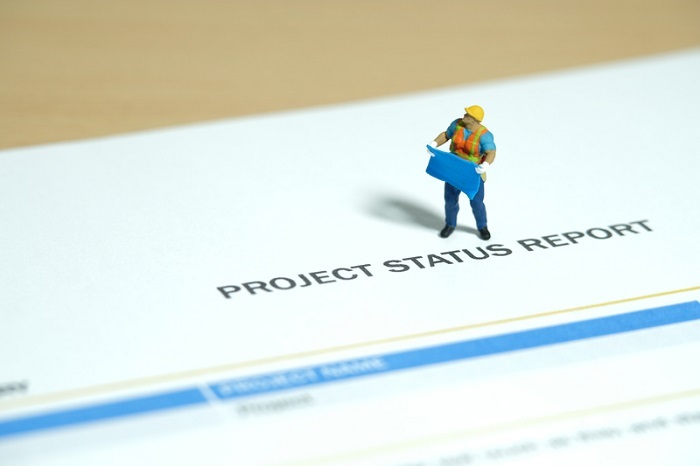
 Data Structure
Data Structure Networking
Networking RDBMS
RDBMS Operating System
Operating System Java
Java MS Excel
MS Excel iOS
iOS HTML
HTML CSS
CSS Android
Android Python
Python C Programming
C Programming C++
C++ C#
C# MongoDB
MongoDB MySQL
MySQL Javascript
Javascript PHP
PHP
- Selected Reading
- UPSC IAS Exams Notes
- Developer's Best Practices
- Questions and Answers
- Effective Resume Writing
- HR Interview Questions
- Computer Glossary
- Who is Who
Project Status Reporting: How to Keep Stakeholders Informed and Engaged
Project status reporting is like a project's pulse. The pulse keeps everyone on the same page, focused, and going in the same direction. The project's health and vigor may be seen via the communication channel. Its success, however, depends on several crucial factors. It's crucial to recognize the stakeholders and their requirements to produce successful project status reports.
Understanding what each stakeholder wants to know and writing the report with that audience in mind is beneficial. This article will cover the essential components of efficient project status reporting, recommended practices for creating and distributing project status reports, and project status report samples.

Key Elements in Project Reporting
The quality of effective project status reporting depends on several crucial components. These components consist of the following ?
Communication clarity ? One of the most important aspects of project status reporting is clarity. The report must utilize straightforward language devoid of jargon and be simple to comprehend. To educate stakeholders on the project's progress and prevent information overload, it's critical to pick the appropriate detail.
Consistency and promptness ? Project status reports should be submitted on time and according to deadlines. Building responsibility and trust requires promptness and consistency. It's crucial to develop and adhere to a regular reporting cycle.
Relevance and context ? For stakeholders to comprehend the consequences of the project's state, project status reports should concentrate on the most crucial facts and give context. It's critical to explain how the project's current condition fits its objectives, schedule, and financial constraints.
Visualization and presentation ? To make the information more interesting and simple to interpret, effective project status reports include visualization and production approaches. Stakeholders can rapidly understand the state of the project using charts, graphs, and other visual aids.
Top 7 Tips to Keep Stakeholders Informed and Engaged
The top 7 tips for keeping stakeholders informed and involved are as follows ?
1. Understand Your Stakeholders
To keep your stakeholders informed and involved, it's important to comprehend their requirements, interests, and expectations. This entails figuring out your stakeholders, what information they want, and how they like to be updated. You can ensure that each stakeholder stays involved and informed throughout the project by customizing your communication.
2. Provide Updates Regularly
Frequent project progress updates to aid in developing stakeholders' confidence. Establishing a regular reporting plan that is compatible with the project's timetable and degree of complexity is crucial. Depending on the project's demands, this may be updated every week, every two weeks, or every month.
3. Employ Multiple Communication Channels
Not all stakeholders are comfortable using the same ones. Some people may choose email, while others might favor in-person meetings or video conferencing. To guarantee that all stakeholders get the information they want in the format they choose, it is crucial to employ a variety of communication channels.
4. Be Open and Truthful
Trust and engagement among stakeholders depend on openness and honesty. It's critical to freely and honestly share any problems or hazards that might affect the project. This enables interested parties to provide feedback and assist in preventing any issues.
5. Listen to Feedback
Keeping stakeholders involved requires listening to their issues and encouraging feedback. This entails being receptive to criticism, attending to problems, and making necessary adjustments. You can ensure that your communication is successful and satisfies your stakeholders' demands by paying attention to their comments.
6. Promote Teamwork
Promoting teamwork among stakeholders helps in creating a feeling of shared ownership and involvement. Regular team gatherings, cross-functional task forces, or consensus-based decision-making are part of this. Collaboration among stakeholders may help them overcome obstacles and advance the project.
7. Be Proactive
Using a proactive approach to problem-solving and communication may keep stakeholders informed and involved. This entails foreseeing future problems and communicating them before they develop into crises. Moreover, it involves being proactive in requesting stakeholder input and resolving any difficulties or issues that may come up.
Best Practice to Write a Project Status Report
1. Determine the Goal
You need to be results-driven if you want to be productive. Ask yourself honestly what you want to achieve with your next project report before you even begin to write it. Have a clear idea of what you want the report's recipients to learn, and take the necessary measures to make that evident.
2. Choosing the Right Targets
Your target audience should always be in mind while creating project reports. Typically, management, executive stakeholders, and your clients will read your project status report. In light of this, be sure to speak in a language they can understand and keep your updates relevant to their interests.
Consider developing a second status report with their requirements in mind if you need to generate a report that is also directed to your team members. The goal is to ensure that the data you give is useful to each audience separately rather than producing a single report for all of them.
3. Collect the Data and Facts
Only a trustworthy report will be able to reach its target. The stakeholders will trust only accurate and understandable material in the report. Because of this, it's crucial to support your assertions with evidence and facts that convincingly support them. A suitable illustration would include a cost analysis prepared by a specialist with a request for more financing for a project.
4. Putting them in the Correct Format
It's crucial to keep your report concise while maintaining a clear format. Your project status report should include a general summary of the project's milestones, risks, problems, financial details, and RAG progress. You may also highlight the significant accomplishments from the previous period.
5. Performance and Progress Reporting
Include the major accomplishments from the most recent period in your project status report to convey all team and individual victories effectively. Moreover, it allows top managers to intervene when a project does not go according to plan by enabling them to evaluate a team's performance. In front of senior management, showcasing your team's success and growth while praising their efforts boosts morale, productivity, and the desire to work more.
6. Be concise and to the Point
Although two pages may not appear brief, they are in the context of project progress reports. Theoretically, you shouldn't have problems or worries that take up two pages since it shows no progress. A project status report should not serve as your project plan since it is a tool for informing people of developments.
7. Verify the Readability
Attempt to make reading your report simpler and more pleasurable. This may be achieved by effectively using supporting lists, graphics, and formatting. Use bullet points to break up lengthy text passages into manageable parts.
Although giving stakeholders detailed information is desirable, be careful not to go overboard. Top executives have a ton of additional reports in addition to managing your project. If you include more material throughout the report, readability will decrease.
Conclusion
Project status reports are vital to the development of any project. By giving transparency into the project's progress, emphasizing accomplishments, revealing challenges and dangers, and facilitating improved decision-making, they aid stakeholders in maintaining engagement. These reports' frequent updates may foster confidence and trust while ensuring that everyone participating in the project works toward a common objective. As a result, it is crucial for project managers to frequently produce and distribute status updates to keep stakeholders informed and involved and to guarantee that the project is finished on schedule and within budget.

